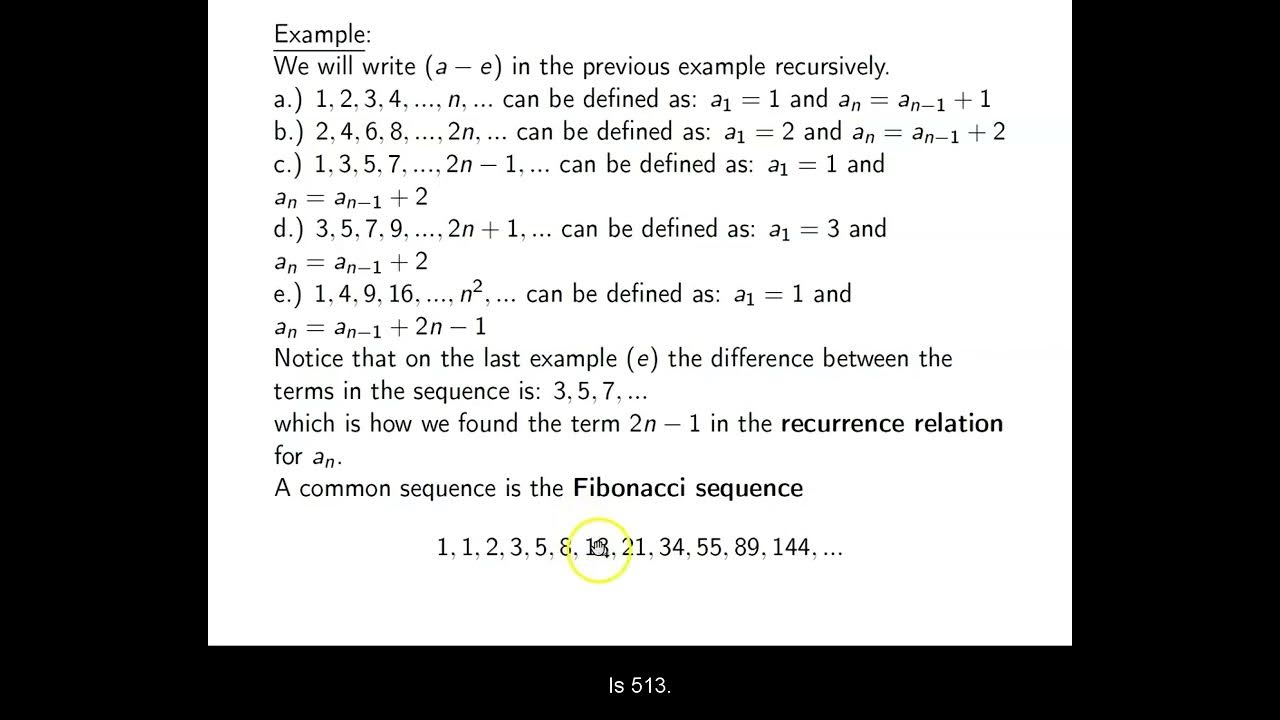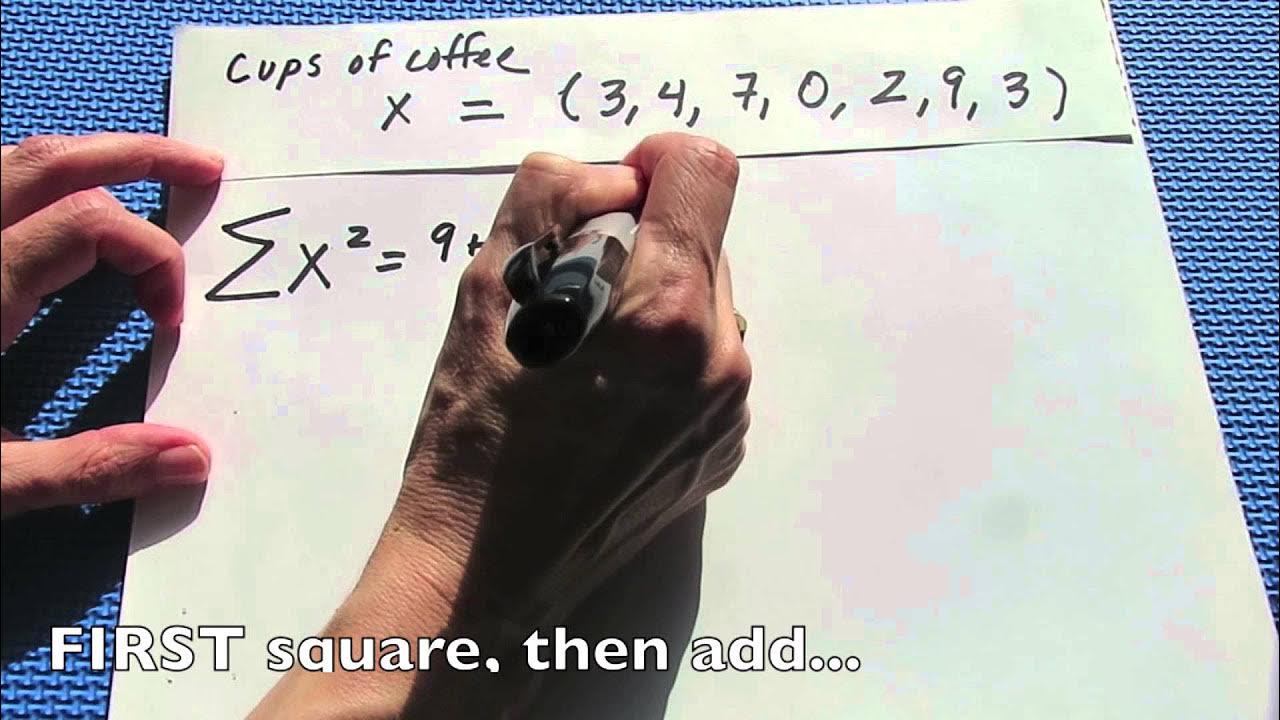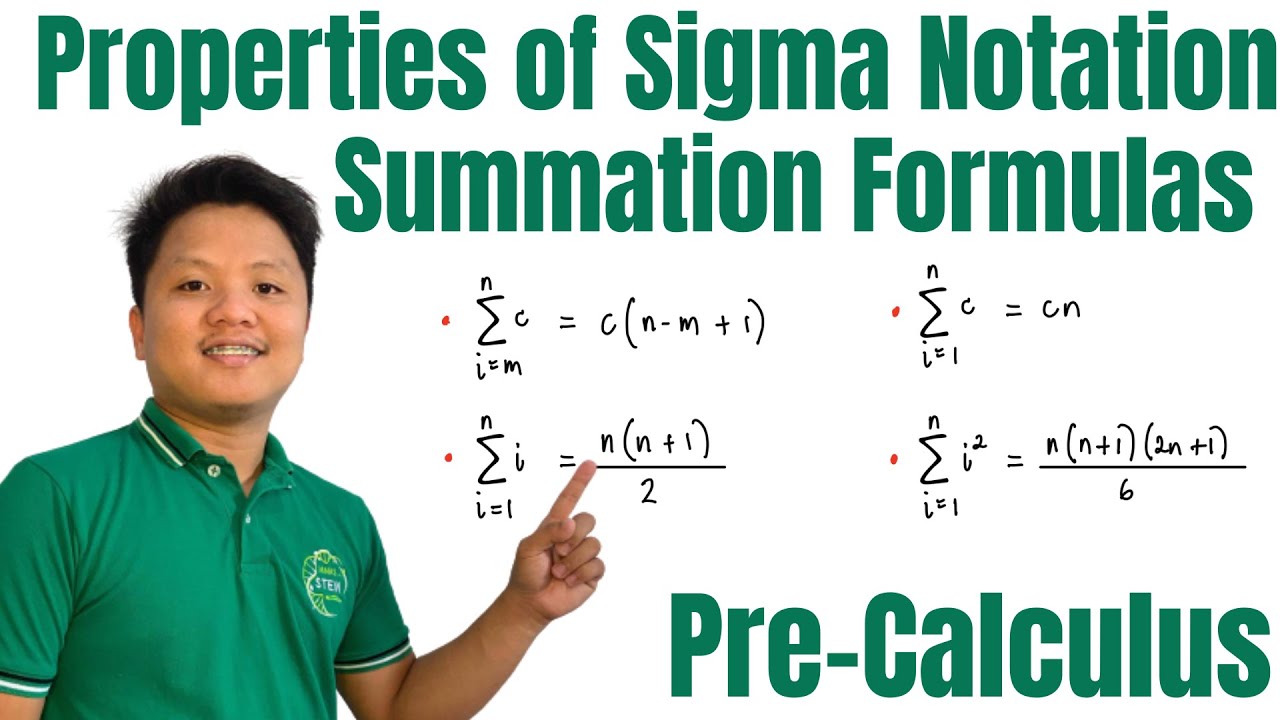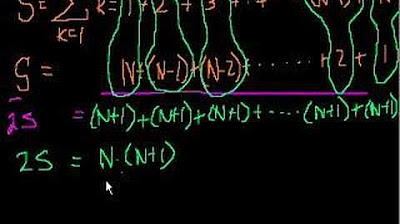Sigma notation for sums | Sequences, series and induction | Precalculus | Khan Academy
TLDRThe video introduces Sigma notation, a mathematical tool used to represent the sum of a sequence of numbers following a specific pattern. It simplifies the expression of large sums by defining an index that starts at a certain value and increments until a final value. The concept is demonstrated with examples, highlighting the efficiency of Sigma notation over traditional summation methods, especially for large sequences.
Takeaways
- 📝 Sigma notation is a mathematical symbol used extensively for representing sums of sequences with a pattern.
- 🔢 The notation simplifies the process of expressing the sum of a large number of terms without having to write out each term individually.
- 📈 The capital Greek letter 'Sigma' (∑) is used to denote the summation operation.
- 🔄 An index variable, often denoted by 'i', is defined to represent the terms in the sequence being summed.
- 📍 The index variable starts at a specific value and increments until it reaches a predefined upper limit.
- 🌟 The sum of the first 10 natural numbers can be written in Sigma notation as ∑(i) from i=1 to i=10.
- 🚀 Expanding the example, the sum of the first 100 natural numbers is represented as ∑(i) from i=1 to i=100.
- 🛠️ Sigma notation can be applied to more complex sequences, such as the sum of pi times the square of 'i' from i=0 to i=50.
- 📊 When i=0, the term is pi times 0 squared, which equals 0, demonstrating how the notation handles non-positive indices.
- 🔢 The process involves incrementing the index and summing terms until the upper boundary is reached, at which point the summation stops.
- 🌐 Sigma notation provides a cleaner and more efficient way to represent and understand large sums compared to writing out each term.
Q & A
What is the primary purpose of Sigma notation?
-The primary purpose of Sigma notation is to provide a clean and efficient way to represent the sum of a sequence of numbers following a specific pattern, making it easier to express and work with large sequences of terms.
How does the script introduce the concept of Sigma notation?
-The script introduces Sigma notation by discussing the challenge of representing the sum of the first 10 numbers and then extending the concept to the sum of the first 100 numbers, highlighting the need for a more efficient notation to avoid writing out each term.
What is the significance of the index in Sigma notation?
-The index in Sigma notation is significant as it represents the variable that takes on consecutive values within the defined range, allowing for the systematic summation of terms according to the pattern specified in the notation.
How does the script illustrate the use of Sigma notation with an example?
-The script illustrates the use of Sigma notation by showing how the sum of the first 10 natural numbers can be represented using the notation, and then further extending this to the sum of the first 100 natural numbers.
What is the role of the Greek letter Sigma in this notation?
-The Greek letter Sigma (Σ) is used in this notation as a symbol to denote the summation operation, making it clear that the expression represents a sum of a sequence of terms.
How does the script suggest practicing understanding of Sigma notation?
-The script suggests practicing understanding of Sigma notation by pausing the video and writing out the notation for the sum of the first 10 numbers, and then attempting to write the Sigma notation for the sum of terms from i=0 to i=50 of πi^2.
What is the advantage of using Sigma notation over writing out each term of a sum?
-The advantage of using Sigma notation over writing out each term is that it provides a much cleaner and more concise representation of the sum, especially when dealing with large sequences, making it easier to understand and manipulate mathematical expressions.
How does the script demonstrate the summation process in Sigma notation?
-The script demonstrates the summation process by incrementing the index from its starting value, multiplying it by the term's pattern (in the example, the term is i itself), and adding it to the sum until the index reaches the specified upper limit.
What is the general form of Sigma notation?
-The general form of Sigma notation is Σ (index) = (expression), where the index starts at a lower bound, takes on consecutive values, and the expression is the pattern that the terms follow.
How does the script handle the concept of summing terms with a different pattern?
-The script handles the concept by introducing a new example where the term's pattern is πi^2 and showing how to apply the summation process for this different pattern, incrementing the index and calculating the sum until the upper limit is reached.
What is the importance of understanding both Sigma notation and the expanded form of a sum?
-Understanding both Sigma notation and the expanded form of a sum is important because it allows for flexibility in mathematical expression and communication. While Sigma notation is more concise and easier to work with, the expanded form can sometimes provide more clarity, especially for those who are new to the concept.
Outlines
📚 Introduction to Sigma Notation
This paragraph introduces the concept of Sigma notation, a mathematical tool used to represent the sum of a series of terms with a specific pattern. The need for Sigma notation arises when dealing with large sequences of numbers, as it provides a more efficient and cleaner way to express sums compared to listing each term individually. The explanation begins with a simple example of finding the sum of the first 10 natural numbers and progresses to more complex scenarios, emphasizing the utility of Sigma notation in mathematical problem-solving.
Mindmap
Keywords
💡Sigma Notation
💡Sum of Terms
💡Pattern
💡Index
💡Increment
💡Boundary
💡Series
💡Mathematical Career
💡Clean Expression
💡Pi i Squared
Highlights
Introduction to Sigma notation, a fundamental concept in mathematics.
Sigma notation simplifies the expression of sums with patterns.
Example of summing the first 10 natural numbers using Sigma notation.
The concept of incrementing an index to find subsequent terms in a series.
Explanation of how to represent a sum using Sigma notation with a defined index and range.
The importance of notation in mathematics for expressing complex ideas concisely.
Demonstration of summing a series of squared numbers multiplied by a constant.
How to write out a sum using Sigma notation and its components: the index, the starting value, and the ending value.
The process of incrementing the index and evaluating the expression for each term in the series.
The practical application of Sigma notation in representing large sums without having to list each term.
The use of Sigma notation to represent the sum of a series involving variables and functions.
The significance of recognizing when the index reaches the upper boundary of the sum.
The comparison between writing out a full sum and using Sigma notation to represent it.
The encouragement for viewers to practice writing Sigma notation for better understanding.
The clear and structured representation of sums as a powerful tool in mathematical communication.
Transcripts
Browse More Related Video

Writing Summations in Sigma Notation | Series and Sigma Notation | Pre-Calculus

Ch. 12.1 Sequences and Summation Notation

Stats with Professor B: A Basic Introduction to Summation Notation

Properties of Sigma Notation and Summation Formulas | Pre-Calculus

Sequences and Series (part 1)

The Definite Integral Part II: Using Summation Notation to Define the Definite Integral
5.0 / 5 (0 votes)
Thanks for rating: